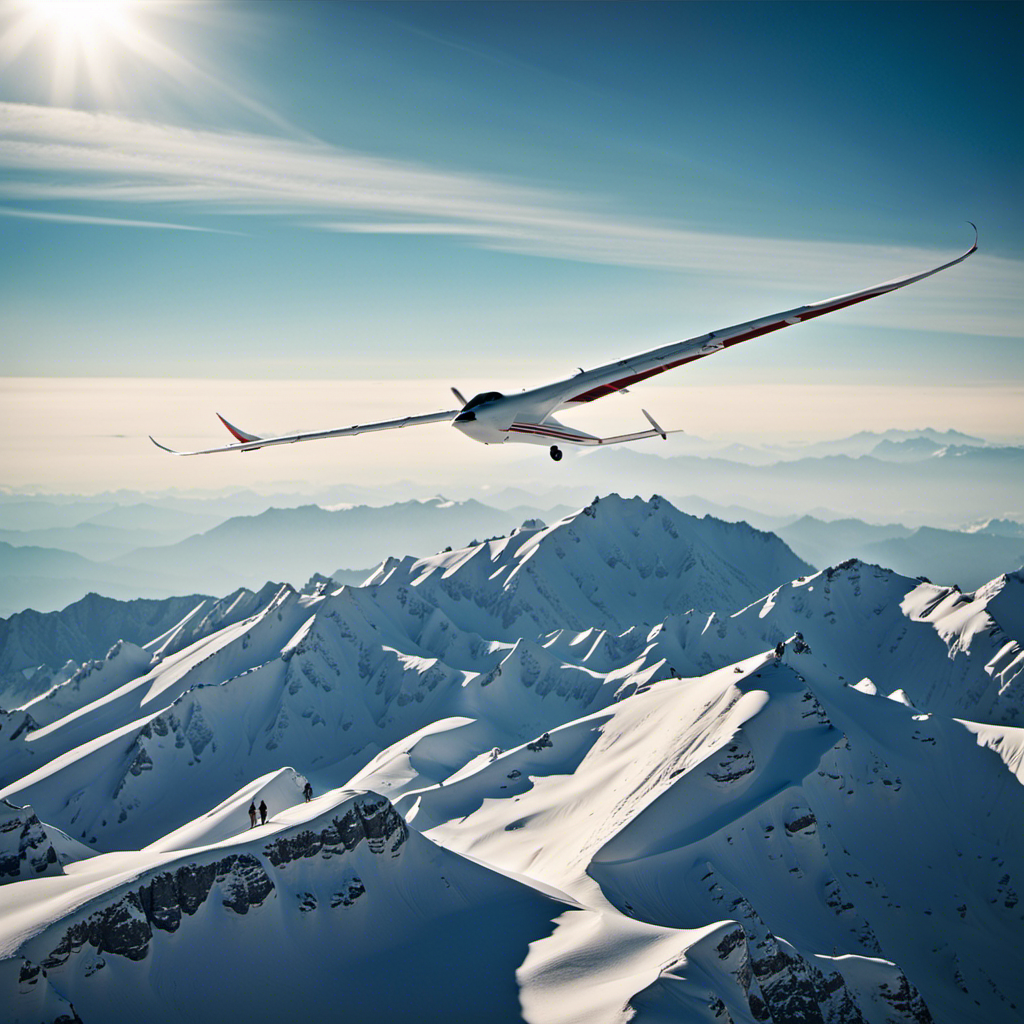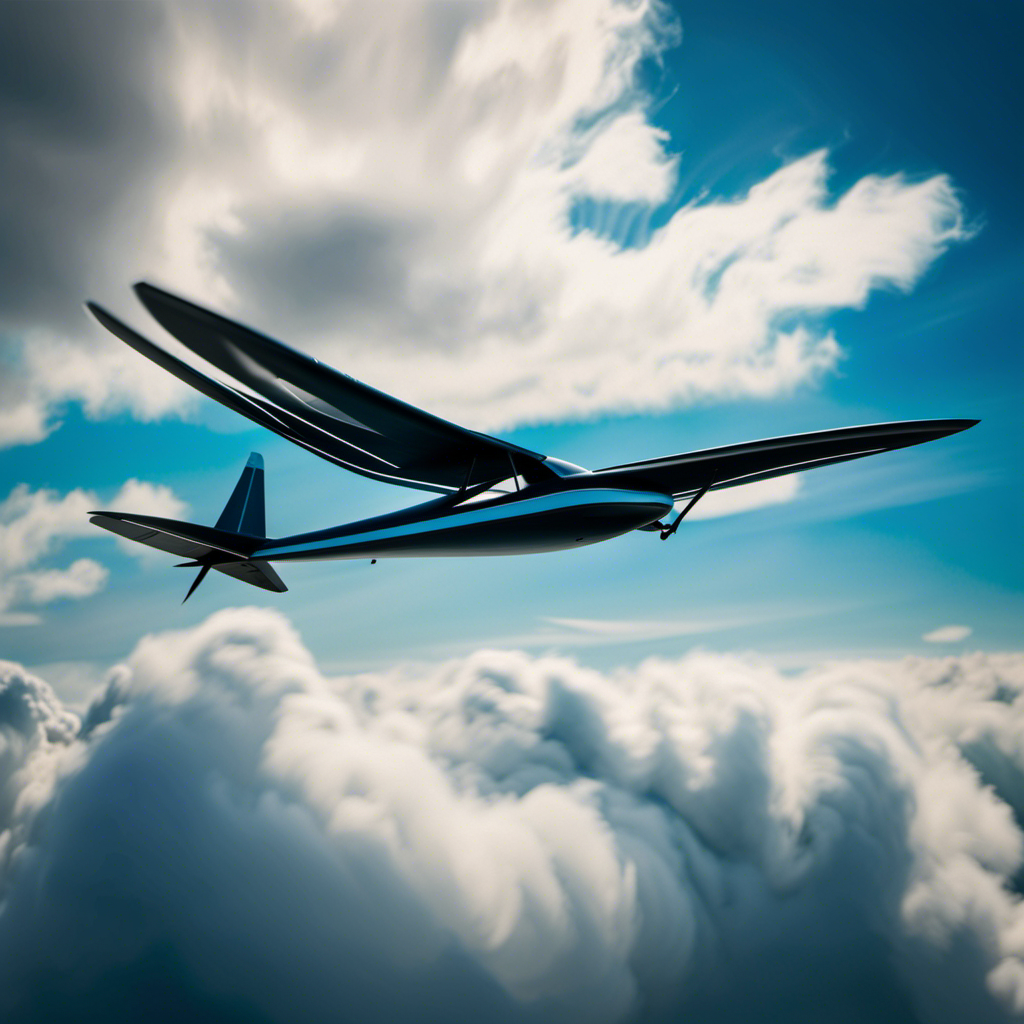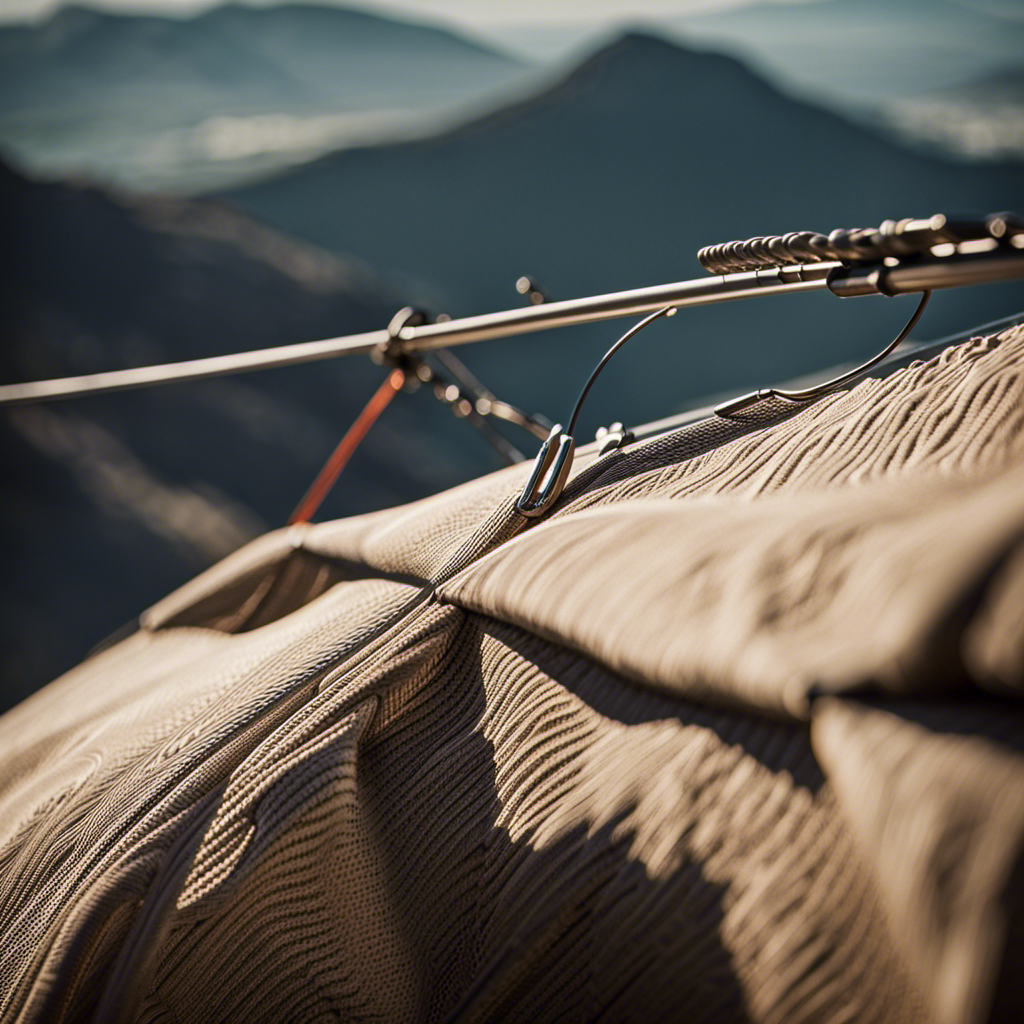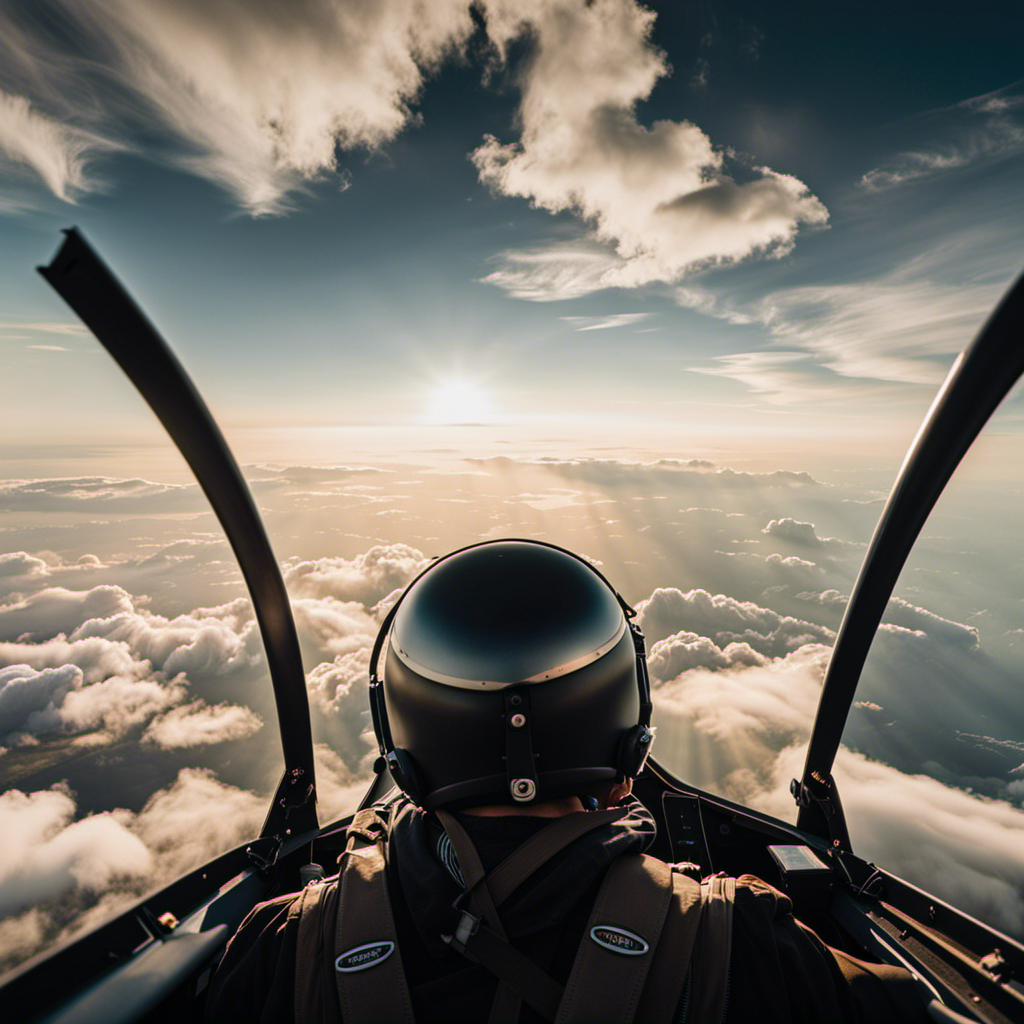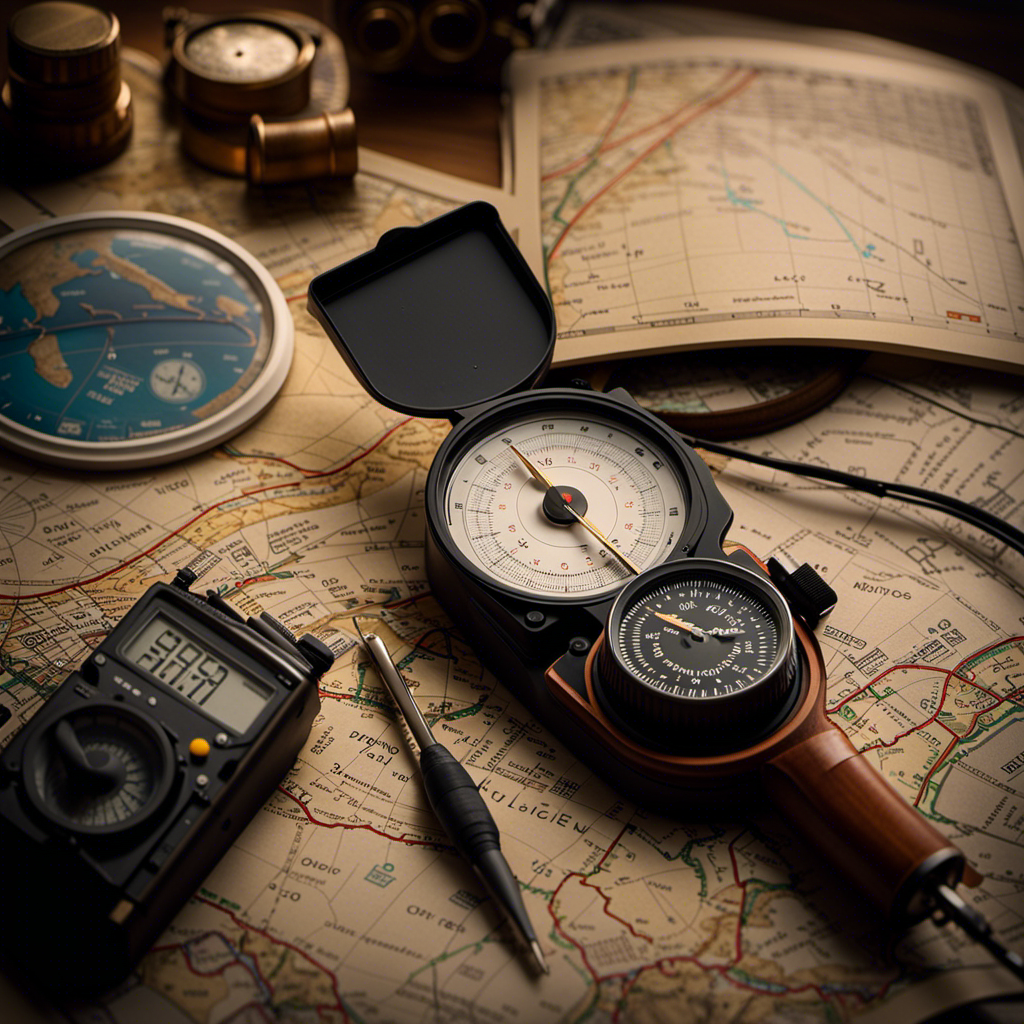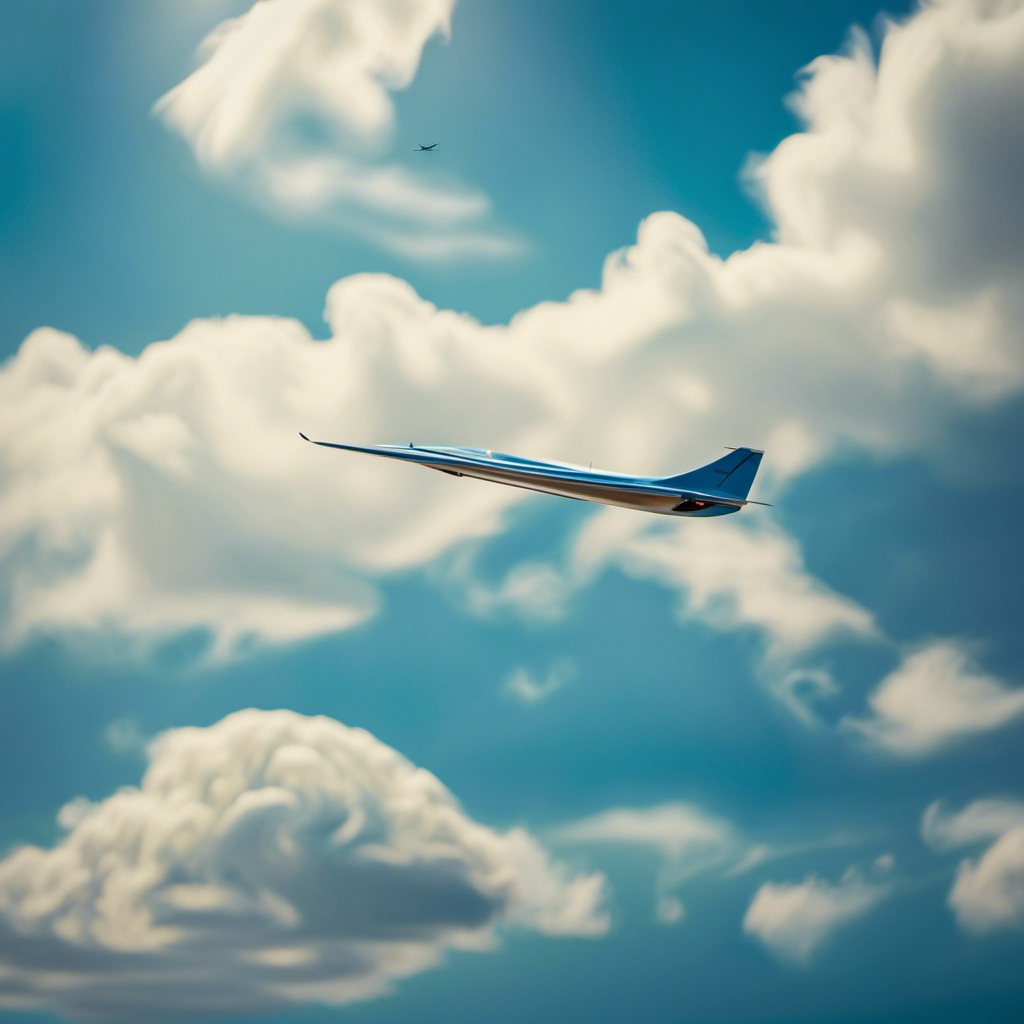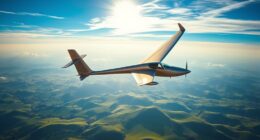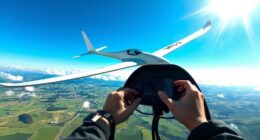I’ve always been amazed at the impressive distance gliders can cover without the need for an engine.
Did you know that the current world record for glider distance is a mind-boggling 1,687 kilometers?
In this article, we’ll delve into the science and skill behind glider flight, exploring the factors that determine just how far these remarkable aircraft can go.
From understanding lift and airflow to harnessing thermals and updrafts, join me as we uncover the secrets to maximizing glider flight distance.
Key Takeaways
- Thermals and updrafts play a crucial role in extending glider flight distance by providing significant boosts in altitude and additional lift.
- Cross-country flights, made possible by advancements in glider equipment and navigation techniques, allow for soaring effortlessly across vast distances.
- Technological advancements in glider design and materials have driven pilots to push boundaries and break distance records multiple times.
- Maximizing glider flight distance involves optimizing altitude and timing, understanding wind patterns, and utilizing thermals and updrafts effectively.
The Basics of Glider Flight
The basics of glider flight include understanding how air currents allow the glider to stay aloft. As a glider pilot, I have learned that glider design and aerodynamics principles play a crucial role in achieving flight.
Gliders are designed to have a high lift-to-drag ratio, which means they generate a significant amount of lift relative to their drag. This allows them to stay airborne for extended periods without an engine. The shape of the wings, known as the airfoil, is carefully designed to maximize lift and minimize drag.
The Role of Lift and Airflow
One important factor in how long a glider can stay in the air is the role of lift and airflow. Understanding the lift mechanics and aerodynamic principles at play is crucial for maximizing the glider’s flight potential. Here are four key elements to consider:
-
Angle of Attack: This refers to the angle between the wing’s chord line and the oncoming airflow. Finding the optimal angle of attack allows the glider to generate the most lift.
-
Wing Shape: The airfoil shape of the wing plays a vital role in generating lift. A well-designed wing with a streamlined shape reduces drag and enhances the glider’s performance.
-
Wing Loading: This refers to the weight of the glider divided by the wing’s surface area. Lower wing loading results in better lift-to-drag ratio and longer flight times.
-
Thermals: Gliders can exploit rising columns of warm air called thermals to gain altitude. Understanding how to locate and utilize thermals effectively can greatly extend a glider’s flight duration.
By comprehending these lift mechanics and aerodynamic principles, glider pilots can optimize their flight performance.
However, to fully understand the dynamics of glider flight, it is also crucial to consider the importance of weather conditions.
The Importance of Weather Conditions
To maximize your flight potential, it’s crucial to consider the importance of weather conditions. As a glider pilot, I understand the significance of weather forecasting in determining the success of a flight.
By closely monitoring weather patterns, we can anticipate changes in wind speed and direction, which directly impact glider performance. Strong tailwinds can extend our range, while headwinds can limit our progress. Additionally, understanding the presence of thermals, updrafts of warm air, can significantly increase our altitude and distance covered.
Weather conditions also affect the stability of the atmosphere, which can influence the overall smoothness of our flight. Taking into account weather conditions is essential for planning the most efficient and safe route.
Now, let’s explore the impact of glide ratios and how they contribute to the glider’s performance.
The Impact of Glide Ratios
By understanding glide ratios, pilots can optimize their flight performance. Glide ratio is a critical factor in determining a glider’s performance and how far it can fly. The glide ratio is the distance a glider can travel horizontally compared to the altitude it loses during the glide.
Several factors affect the glide ratio of a glider, including:
-
Wing design: The shape and aerodynamics of the wings greatly impact the glide ratio. A well-designed wing with a high aspect ratio can result in a better glide ratio.
-
Weight: The weight of the glider affects its ability to maintain a higher glide ratio. Lighter gliders tend to have better glide ratios compared to heavier ones.
-
Airspeed: The airspeed at which the glider is flown also affects the glide ratio. Pilots need to find the optimal airspeed to maximize their glide ratio.
Understanding these factors and how they influence glide ratio is crucial for pilots looking to optimize their flight performance. It allows them to make informed decisions during their flights and maximize the distance they can cover.
Now, let’s explore the influence of pilot skill and experience on glider performance.
The Influence of Pilot Skill and Experience
Maximizing your glide ratio relies heavily on your skill as a pilot and your level of experience. As a seasoned glider pilot, I understand the importance of honing flight techniques to maximize the potential of each glide. Piloting a glider requires a deep understanding of aerodynamics, weather patterns, and the ability to make split-second decisions. When it comes to pilot experience, it’s not just about the number of hours logged, but also the variety of flying conditions encountered. The more diverse experiences a pilot has, the better equipped they are to handle different scenarios and optimize their glide. To illustrate this, let’s take a look at the table below, showcasing how pilot experience can influence glide performance.
| Pilot Experience | Glide Ratio |
|---|---|
| Novice | 20:1 |
| Intermediate | 25:1 |
| Advanced | 30:1 |
| Expert | 35:1 |
As you can see, the glide ratio improves as pilot experience increases. This is due to the pilot’s ability to make precise adjustments, exploit updrafts, and choose the most efficient flight paths. However, it’s important to note that pilot experience is just one piece of the puzzle. The effects of weight and payload also play a significant role in a glider’s performance, which we will explore in the next section.
The Effects of Weight and Payload
Having discussed the crucial role of pilot skill and experience in maximizing a glider’s performance, it is now important to delve into another critical factor that affects the distance a glider can fly: weight and payload.
The weight distribution of a glider plays a significant role in its aerodynamic efficiency and overall performance. Properly distributing the weight ensures that the glider maintains stability and maneuverability during flight.
Additionally, cargo capacity must be carefully considered, as exceeding the recommended payload can negatively impact the glider’s performance and safety. By meticulously managing weight and payload, pilots can optimize their glider’s endurance and increase its potential distance.
However, weight and payload are not the sole determinants of a glider’s range. The role of thermals and updrafts must also be examined to fully understand the factors influencing a glider’s maximum flight distance.
The Role of Thermals and Updrafts
Thermals and updrafts play a crucial role in a glider’s flight performance. As a glider pilot, I understand the importance of thermal dynamics and the ability to recognize and utilize updrafts to maximize my flight distance.
Thermals are columns of rising air, caused by the sun heating the ground, which can provide the glider with a significant boost in altitude. By understanding how thermals form and move, I can strategically navigate through them, gaining altitude and extending my flight time.
Updrafts, on the other hand, are localized areas of rising air created by various factors such as wind encountering a hill or a mountain. These updrafts can provide additional lift, allowing me to soar effortlessly through the sky.
With a deep understanding of thermal dynamics and the ability to exploit updrafts, glider pilots have the potential for exhilarating cross-country flights that can span great distances.
The Potential for Cross-Country Flights
Navigating through thermals and utilizing updrafts allows glider pilots to soar effortlessly across vast distances, making cross-country flights an exhilarating possibility. With advancements in glider equipment and navigation techniques, we are now able to push the boundaries of glider flight like never before.
Modern gliders are equipped with state-of-the-art instruments that provide accurate information about wind speed, direction, and thermals. This allows pilots to make precise decisions about their flight path, maximizing their chances of finding favorable lift conditions.
Additionally, navigation techniques such as ridge soaring and wave riding have become essential skills for cross-country flights. By mastering these techniques, pilots can navigate through different types of terrain and weather conditions, further extending their flight range.
As we delve into the world records for glider distance, we will explore the remarkable achievements that have been made in pushing the limits of glider flight.
The World Records for Glider Distance
After exploring the potential for cross-country flights in gliders, it’s fascinating to delve into the world records for glider distance.
Over the years, ambitious pilots have pushed the boundaries of what is possible, attempting to break records that seem unimaginable. These world record attempts have not only showcased the skill and determination of pilots but have also been driven by technological advancements in glider design and materials.
With each attempt, gliders have become more aerodynamic, lightweight, and efficient, enabling pilots to achieve greater distances. These advancements include improvements in wing design, the use of high-strength composite materials, and advanced navigation systems.
As a result, world records have been shattered time and again, inspiring future generations of glider pilots to reach even greater heights.
Now, let’s explore some tips for maximizing glider flight distance.
Tips for Maximizing Glider Flight Distance
To get the most out of your glider flight, it’s important to optimize your altitude and timing.
Maximizing glide performance is key to achieving great distances. When it comes to altitude, it’s crucial to climb as high as possible before embarking on your cross-country journey. This allows you to take advantage of potential energy and gives you more time to assess wind patterns.
Speaking of wind patterns, they play a significant role in determining your flight distance. Understanding how winds move in your area is essential for planning your route and taking advantage of thermals and ridge lift. By carefully analyzing wind patterns, you can identify areas of lift and sink, making adjustments to your flight path accordingly.
Frequently Asked Questions
How much does a glider weigh?
A glider’s weight plays a crucial role in its performance. As an experienced pilot, I can tell you that the weight affects factors such as lift, maneuverability, and speed. The lighter the glider, the better its performance capabilities.
What is the average duration of a glider flight?
The average flight time of a glider depends on several factors, such as wind conditions, thermals, and pilot skill. These factors can greatly affect the duration of a glider flight, allowing for longer and more enjoyable experiences in the sky.
Can a glider fly without any wind?
Yes, a glider can fly without any wind. Glider performance and control techniques allow the pilot to maintain altitude and even gain height using thermals, ridge lift, and wave lift.
Is it possible to fly a glider at night?
Yes, it is possible to fly a glider at night using specific flying techniques and adhering to legal regulations. However, it requires additional training and equipment due to reduced visibility and increased risks.
Are there any safety precautions that should be taken before flying a glider?
Before flying a glider, it is crucial to follow a thorough pre-flight checklist to ensure safety. Emergency landing procedures should also be understood and practiced. As an experienced pilot, I prioritize these precautions for a successful flight.
Conclusion
In conclusion, the world of glider flight is truly remarkable. With the right conditions and skill, a glider can soar through the skies for incredible distances.
One statistic that truly captures the imagination is the world record for the longest glider flight, which stands at an astounding 2,525 kilometers. Just imagine the feeling of freedom and accomplishment that comes from covering such a vast distance using only the power of the wind.
It is a testament to the incredible capabilities of gliders and the skill of their pilots. So, if you ever dream of soaring through the clouds, remember that the possibilities are endless in the world of glider flight.
With a heart that soars as high as the skies, Aria, affectionately known as “Skylark,” is the driving force behind Soaring Skyways. Her journey into the gliding world began as a young dreamer gazing up at the soaring birds, yearning to experience the weightlessness and freedom they embodied. With years of experience both in the cockpit and behind the scenes, Aria’s commitment to the gliding community is unwavering.
